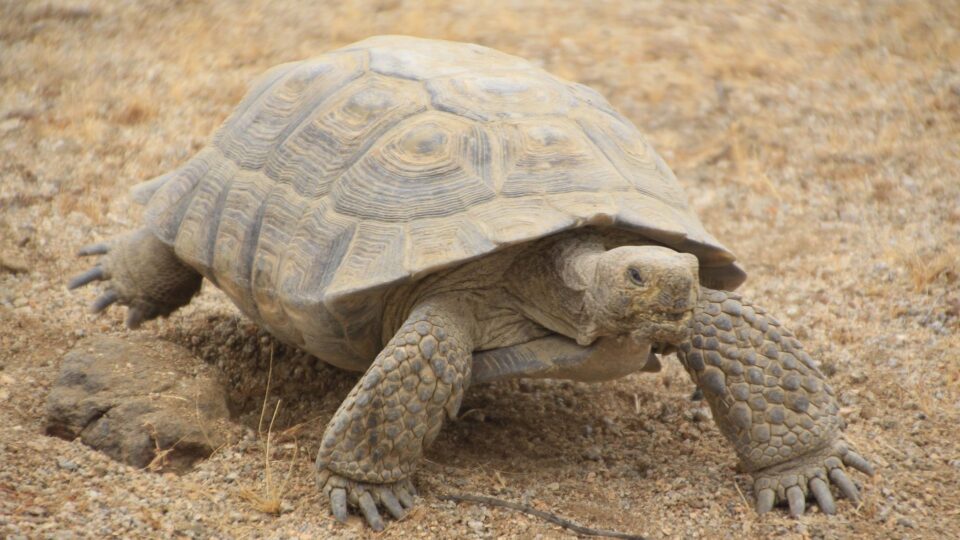A massive but unintended experiment in animal conservation has revealed an unexpected result. Thousands of desert tortoises moved to a translocation site in Nevada had a greater chance of surviving if they had lots of genetic variation.
From 1997 to 2014, over 9,000 Mojave desert tortoises were moved to a 39-square-mile translocation site in the Ivanpah Valley. The tortoises were either abandoned pets or were displaced by developments in suburban Las Vegas and by solar farms in the desert.
The U.S. Fish and Wildlife service took blood samples to screen for diseases and marked each animal before releasing them into the site, enabling them to be tracked in later surveys.
When the researchers compared tortoises that lived or died over the same time period after being relocated to the site, they found that survivors averaged 23% greater heterozygosity than those that perished. Heterozygosity is a measure of genetic variation. Like most organisms, tortoises have two copies of their entire genome, with one from each parent. The more those copies differ from each other, the higher the organism’s heterozygosity.
Researchers are not really sure why greater genetic variation is linked to survival rates. Potentially, individuals with higher heterozygosity have more genomic flexibility. It is the case that tortoises with more genetic variation have a better chance of having at least one copy of a gene that works really well in stressful or new environments.
Human activity and the changing climate are increasing the need to relocate plants and animals. Often the chances for success in doing this are not good, so anything we can learn about things that increase the chances for survival can be very important.
**********
Web Links
UCLA study of threatened desert tortoises offers new conservation strategy
Photo, posted August 23, 2016, courtesy of the Bureau of Land Management California via Flickr. Photo by Dana Wilson, BLM.
Earth Wise is a production of WAMC Northeast Public Radio.
